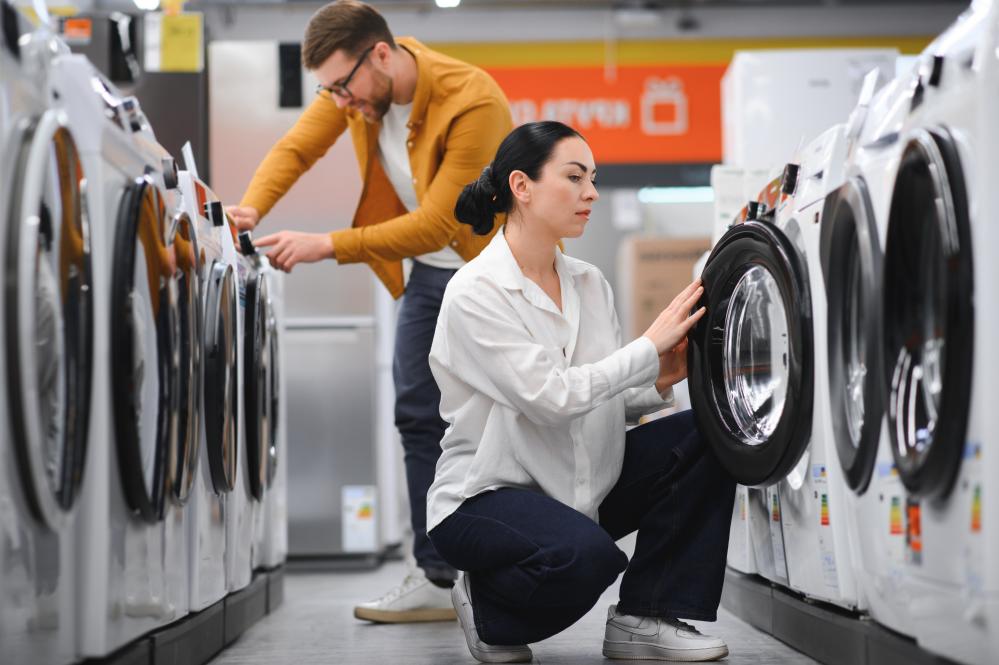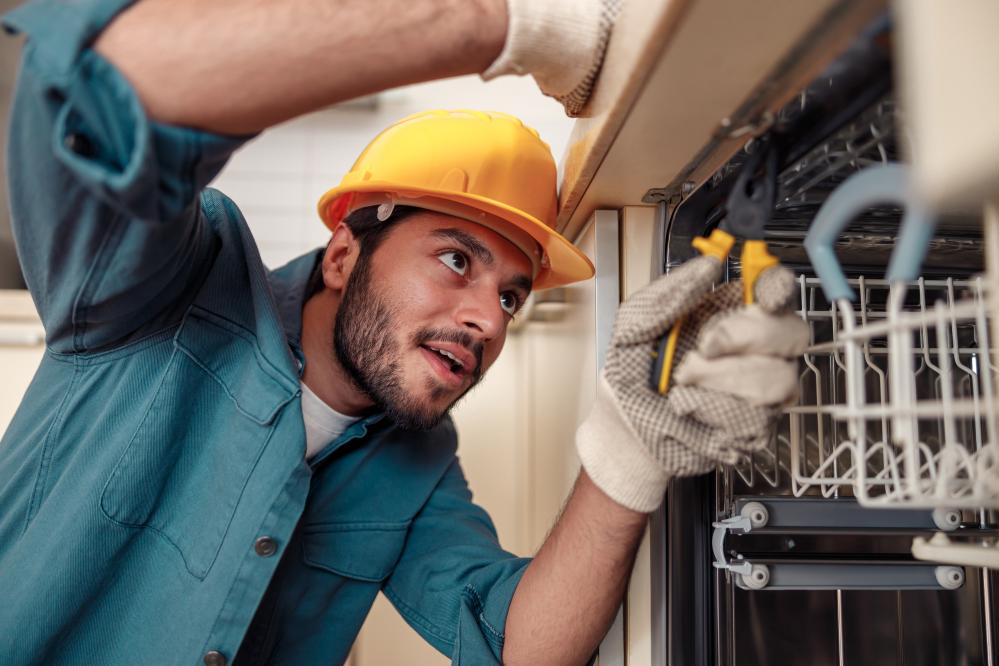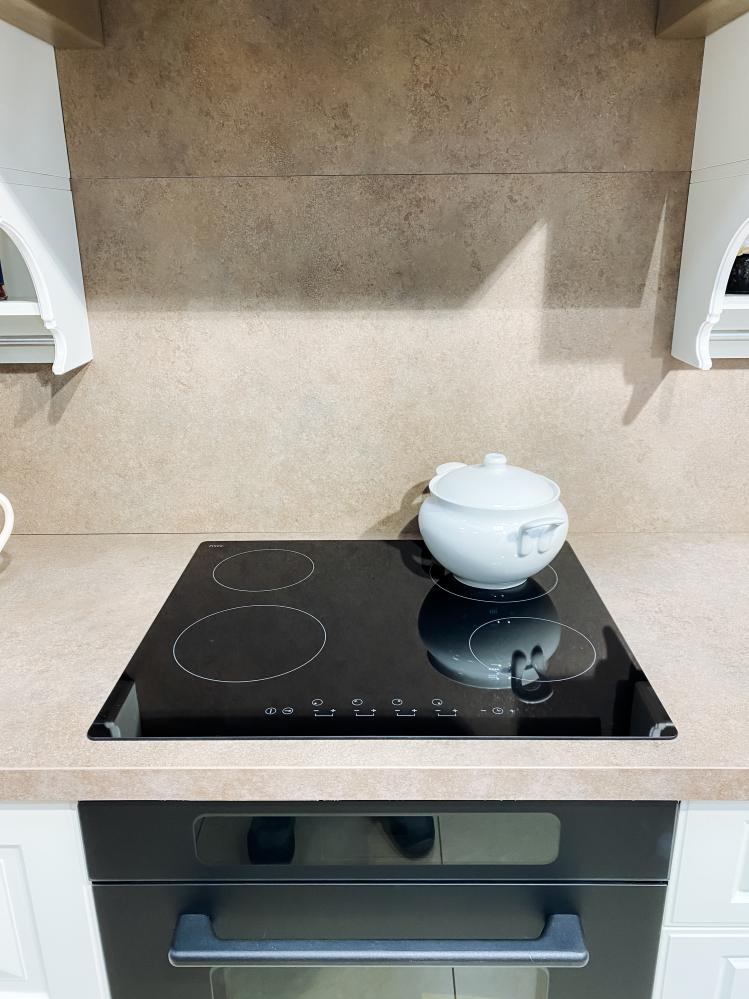Washer Repair Parts Near Me

Finding Affordable Appliance Parts and Repairs
When your washer begins to malfunction, it often feels like a race against time to restore your household's rhythm. Imagine a mountain of laundry piling up--it's the definition of domestic chaos. That's where the search for washer repair parts near me becomes crucial. Finding the exact part needed can breathe life back into your stubborn appliance, saving you from purchasing a new machine or spending excessively on professional services.
A reliable source for washer repair parts near me not only provides the immediate fix but also contributes to the longevity of your appliance. Many people underestimate the impact of minor components--like a faulty valve or worn-out gasket. Replacing such parts can prevent further damage and save significant costs in the long run. It's a nuanced art of piecing together a machine's puzzle, and each part plays a pivotal role.
Working with organizations that emphasize quality and reliability, like Home Alliance, ensures that you're equipped with the finest components. Their expertise in HVAC extends to an in-depth understanding of mechanical systems, positioning them as a trusted partner for finding repair parts and solutions efficiently.
Where to Find Trusted Parts
The quest for washer repair parts near me can lead you down many paths. However, not all paths are created equal. While local hardware stores may offer a selection of parts, the quality and specificity might not always match up to your needs. This is where specialized service providers come into play.
Home Alliance, renowned for their HVAC solutions, also orchestrates a symphony of home appliance repairs and parts acquisition. Their commitment to excellence means that spare parts sourced through them come with an assurance of quality. The technicians, seasoned in the art of appliance troubleshooting, provide personalized insights that cater to your specific model and problems.
My personal experience with Home Alliance's service felt like an enlightening moment. When I faced a daunting washer breakdown, their prompt advice and delivery of the needed part turned a potential crisis into a simple fix. Their knowledge wasn't just technical; it was practical and reassuring.
Choosing the Right Parts for Your Washer
Venturing into the world of washer repair parts near me can be intimidating, especially if you're unfamiliar with the intricate workings of your appliance. Yet, choosing the right part doesn't have to be a cryptic process. It starts with understanding your washer's specific model and the symptoms it exhibits. Identifying whether it's a motor issue, a leaky hose, or a digital glitch is half the battle.
However, not all parts are created equal. Opting for original manufacturer parts (OEM) can be a game-changer. These not only fit perfectly but also maintain the integrity of your washer's performance. But what if OEM parts are out of reach? High-quality aftermarket parts serve as a solid alternative, and here's where professional guidance becomes invaluable.
Home Alliance bridges the gap between confusion and clarity, guiding customers in selecting the most suitable parts. With their breadth of experience in HVAC and appliance repair, their approach is rooted in ensuring compatibility and reliability. Their holistic service model means you're not just purchasing a part--you're investing in peace of mind and future resilience.
Additional Tips for Washer Maintenance
Aside from pinpointing washer repair parts near me, practicing regular maintenance can significantly enhance your washer's lifespan. Just like routine tune-ups for HVAC systems, washers benefit from consistent care. Simple steps, such as cleaning the door gasket to prevent mold or ensuring the drum isn't overloaded, can make a world of difference.
Maintaining a balanced load during washes not only prolongs the life of the motor but also ensures your clothes are treated gently. Removing debris from the drain pump filter and keeping the exterior clean can prevent minor issues from escalating into bigger ones. These small acts of prevention are not just time-savers; they are money-savers.
Emulating the meticulous care that Home Alliance extends to HVAC systems can serve as an inspiration for maintaining appliances at home. Their customer-centric services remind us that attentiveness in everyday maintenance solves potential problems before they arise, saving time, energy, and expense in the long haul. 
The Nuances of Diagnosing Washer Issues
Tackling washer repair whirlpool can initially seem daunting, but breaking it down into manageable segments eases the task. Begin by identifying symptoms: Is the washer not spinning, leaking, or perhaps making unfamiliar noises? Recognizing these issues is akin to recognizing familiar signs on a well-worn path. Each symptom holds a clue that can lead to the root cause, whether it's a simple imbalance in the machine or a more complex electronic failure.
In my experience with Home Alliance, the diagnostic process is pivotal. We often teach customers to start with basic troubleshooting like checking if the washer is loaded evenly or examining water hoses for leaks. It's surprising how often a small oversight can lead to large frustrations. This hands-on involvement also empowers homeowners, making them an integral part of the repair journey and saving potential costs.
For more intricate issues, calling a professional ensures safety and precision. At Home Alliance, our team is skilled in navigating even the most intricate problems associated with washer repair whirlpool. We've encountered scenarios where the problem lay hidden within the machine's electronic system, a puzzle best unraveled by a seasoned technician. Here, expertise translates into efficiency, as professionals can swiftly pinpoint issues that might remain elusive to the untrained eye.
Essential Parts and DIY Tips
When it comes to essential parts for washer repair whirlpool, focusing on components like belts, pumps, and timers is crucial. These elements are often the culprits behind common malfunctions. Belts can wear out like an old shoe, while pumps might clog with debris over time. Having a spare belt or a cleaning session for the pump can circumvent many emergencies.
Once, while assisting a client, we discovered that a simple replacement of a worn-out belt transformed their washer from lethargic to lively. Such stories remind us of the simplicity that sometimes lies beneath seemingly complex problems. It's these small victories that keep our work gratifying and serve as a reminder to check these parts regularly.
For those inclined to dabble in DIY repairs, ensuring safety can't be emphasized enough. Always unplug appliances before inspecting them, and consult your washer's manual for guidance. Some repairs, like cleaning out a clogged pump filter or replacing a belt, can be done with a bit of patience and care. However, knowing when to call a professional is equally important, ensuring that more complicated repairs don't spiral into larger issues.
When to Call the Professionals
Recognizing when to call in a professional for washer repair whirlpool can be as important as performing the repair itself. When faced with electrical issues, such as a machine that won't start or control panels flashing cryptic error codes, it's time to rely on an expert. At Home Alliance, our technicians are adept at deciphering these electronic nuances, ensuring repairs are both swift and safe.
Electrical challenges are best handled by experienced hands. One might recall a tale from our service calls where an error code seemed to spell disaster for a customer. Our technician's knowledge turned it into a mere inconvenience, correcting the issue promptly. It's moments like these that solidify the value of professional expertise.
Additionally, persistent leaks or mechanical failures often hint at underlying issues beyond a simple fix. If the washer drum doesn't move despite all effort, or water keeps pooling under the machine, these are signs best addressed by those with a deep understanding of washer mechanics. Trusting professionals not only saves time but often spares the homeowner from unnecessary stress and potential further mishaps.
Embrace a balanced approach, mixing DIY enthusiasm with professional guidance. This not only ensures efficiency in washer repair whirlpool but elevates the maintenance of all home appliances. Remember, professionals like those at Home Alliance are always ready to lend a hand, offering peace of mind and expert skill with every visit.
Troubleshooting Whirlpool Cooktop Issues
As someone who has navigated the world of home appliance repair, I can say that Whirlpool cooktop repair often begins with identifying the root of the problem. Many customers have shared stories of mysterious clicking sounds or burners that refuse to ignite, turning meal prep into a culinary conundrum. Often, these issues can be traced back to something as simple as a misaligned burner cap or clogged igniter. In the realm of appliance repair, it's essential to embark on a meticulous investigation before reaching for a tool.
While some folks might be tempted to tackle the repair themselves, it's crucial to remember that safety should always come first. Gas appliances, in particular, require careful handling. I've encountered cases where self-repair attempts led to gas leaks, highlighting the importance of professional intervention. At Home Alliance, we emphasize the significance of having a certified technician address these issues to ensure a safe and effective Whirlpool cooktop repair experience.
An often-overlooked aspect of Whirlpool cooktop repair is the role of regular maintenance in preventing issues from occurring in the first place. A little proactive care can save time and money in the long run. Regular cleaning, ensuring that spills are promptly cleaned, and checking the burners and igniters can go a long way in maintaining your cooktop's performance.
Common Solutions for Whirlpool Cooktop Challenges
My experience in the field has shown that some Whirlpool cooktop repairs boil down to replacing common components. For instance, if there's an issue with uneven heating, a faulty element might be the culprit. Replacing burners or igniters often resolves these problems efficiently. Home Alliance professionals carry spare parts to streamline this process, minimizing disruption to your daily routine.
Another frequent issue is control knob malfunction, which can lead to inaccurate temperature adjustments or even a complete failure to ignite. A technician would generally assess whether the knob itself is the problem or if it's a deeper electrical issue. Addressing the underlying cause ensures a long-lasting solution, preventing the need for repeat repairs.
For those experiencing persistent issues with their Whirlpool cooktops, examining the power supply could provide answers. Sometimes, power surges or wiring problems can lead to unresponsive cooktops. It's crucial for a technician to conduct a thorough electrical evaluation to determine if the power supply is steady and reliable.
A piece of wisdom I've gathered from years in the service industry is that a stitch in time saves nine. Regular checks and prompt attention to minor issues can prevent larger, costlier repairs down the line. This preventative mindset not only preserves the lifespan of your cooktop but also ensures peak performance.
Whirlpool Cooktop Repair in the Age of Smart Appliances
As kitchen technology evolves, the complexity of Whirlpool cooktop repair does too. Many modern Whirlpool cooktops incorporate smart technology, offering features like touch controls and app connectivity. A modern challenge that we face at Home Alliance is the integration of technology and the intricacies it brings to repair jobs. Navigating these advancements requires updated technical expertise and ongoing training.
While smart technology adds convenience, it also introduces new failure points. Modern cooktops can suffer from software bugs or connectivity issues, which can be baffling to traditional troubleshooting methods. Our experience at Home Alliance shows that a tech-savvy approach is indispensable when addressing these 21st-century cooktop challenges. Proudly, our technicians receive regular training to keep pace with these technological advancements, ensuring we're a step ahead in providing effective Whirlpool cooktop repair.
With all the connectivity features, it's essential for owners to also maintain the software aspects of their appliances. Ensuring that firmware is up-to-date can sometimes avert issues related to performance and efficiency. Our team frequently advises customers on the importance of following manufacturer recommendations for firmware updates.

Is it worth paying to fix a washing machine?
Determining whether to repair or replace your washer often boils down to a few key considerations. If your washer is relatively new and the repair costs are significantly less than the price of a new unit, then repairing it is usually a sensible choice. Imagine you've spent a considerable amount on a high-efficiency model just a couple of years ago, and it suddenly stops spinning. In such cases, a quick fix would be more economical. On the flip side, if your washer is nearing the end of its lifespan--typically around 10 to 15 years--and requires major repairs, it could be more cost-effective in the long run to invest in a new machine. It's also worth considering the parts involved. For instance, if it's a simple component like a gasket or hose, which we often have in stock at Home Alliance, a repair is definitely worth it. Think of this process as an appraisal, carefully weighing cost, age, and future reliability to make the best decision for your household needs.
What is the average cost to repair a washing machine?
Repair costs can vary widely depending on the specific issue. On average, you might expect to pay between $100 to $400 for most washer repairs. For example, replacing a simple component like a belt or valve could cost you on the lower end, especially if you opt for quality aftermarket parts that Home Alliance recommends. However, if you're looking at more complex issues like a faulty motor or control board, that's where costs can escalate, sometimes reaching the higher end of the range. Here's a quick mental exercise: picture yourself weighing the cost of repair against what you might spend on a new washer, along with the added value of extending your current machine's life. This thought process often helps our clients decide on the best course of action. Remember, a detailed diagnosis is crucial to understanding the true extent and cost of the repair, so seeking professional advice can save you from unnecessary expenses.
What is the most expensive part to replace on a washing machine?
Typically, the most expensive parts to replace are the motor and control board. These components can cost anywhere from $200 to $500 or more, mainly because of the sophisticated technology and labor involved in their replacement. Think of the motor as the heart of your washer; without it, the machine is lifeless. Control boards are akin to the brain, dictating each function with precision. If either part fails, it can cause a host of spin, drain, or electronic issues. At Home Alliance, we often suggest evaluating the cost of these repairs against the age and condition of your washer. We once had a client whose five-year-old washer required a new motor. After weighing the costs, they decided it made sense to repair it, given the machine's otherwise excellent condition. Such decisions are often nuanced, favoring repair when longevity and future performance remain promising.
Can a handyman fix a washing machine?
While it's certainly possible for a handyman to handle basic repairs, such as fixing a broken door latch or replacing a hose, more complex issues may require a specialist's touch. Washers today are increasingly sophisticated, integrating various electronic systems that require specialized knowledge. At Home Alliance, our technicians undergo regular training to stay updated with the latest technology and repair techniques. One client's handyman attempted to fix an electrical issue without proper know-how, leading to further complications. This scenario often underscores the value of a trained professional who can accurately diagnose and efficiently solve the problem without added risk. If you're considering a DIY approach or hiring a handyman, start with simple fixes and remember to always prioritize safety. When in doubt, calling a specialist can save you time, money, and frustration.
Resources
- USA.gov - The official website of the United States government, providing a wide range of information and services for citizens.
- Consumer Reports - A non-profit organization providing unbiased product reviews and ratings to help consumers make informed decisions.
- Environmental Protection Agency (EPA) - The EPA's website offers valuable resources on environmental issues, including guidelines for appliance repair and maintenance.
- U.S. Department of Energy - The Department of Energy's website provides energy-saving tips and resources for maintaining appliances to improve efficiency.
- National Fire Protection Association (NFPA) - The NFPA offers safety information and guidelines on fire prevention, including tips for safe appliance repair.

